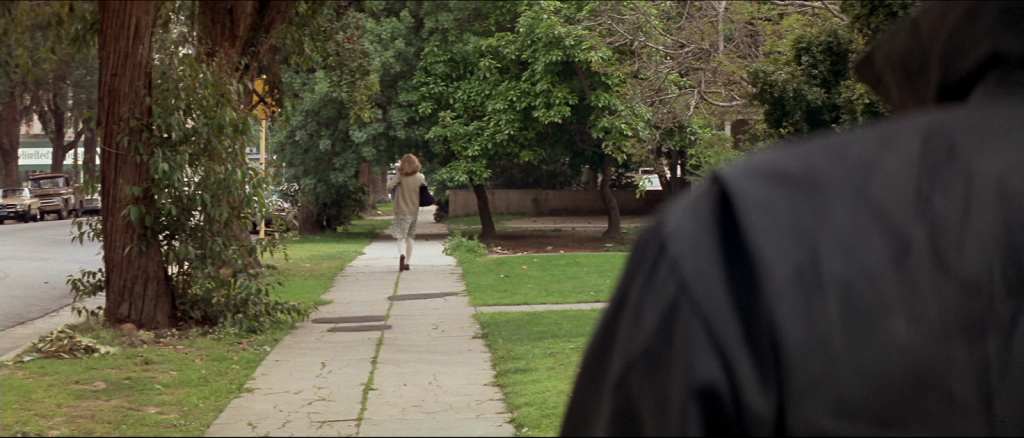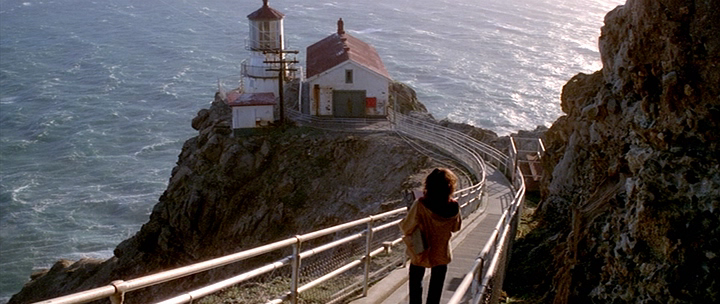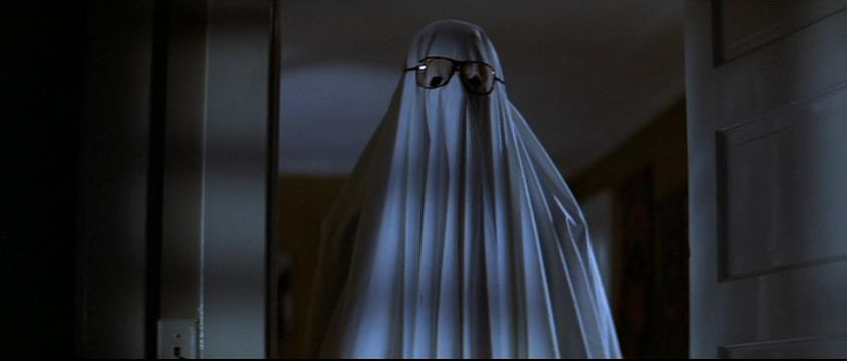Film is an entertainment medium that, by its very nature, tends to reward the viewer in rewatch. Sometimes movies even reveal to us how we’ve grown or changed since we last saw them. Our own Max Robinson reassesses old favorites, seasonal classics and the occasional oddball lost under the couch in his monthly column, Stale Popcorn.
John Carpenter is handily my favorite horror director if past Deadshirt articles hadn’t made that clear. At their best, Carpenter’s scary movies merge an economic storytelling sensibility with compelling characters, seasoned with the ominous synth-creep that’s become his trademark. Halloween and The Fog, released back to back in a two year period, are his first outright horror movies (although you can see the seeds in the zombie-movie-in-everything-but-name Assault on Precinct 13) and give us an interesting look at an up and coming director finding himself with a hit and the subsequent pressure to live up to that hit.
The villains of both films are vague and broad by design: there’s Michael Myers, credited only as “The Shape,” as well as the fog itself. Donald Pleasence’s Dr. Loomis refuses to refer to Myers as “him” in conversation with a nurse, only “it.” He doesn’t believe him to be a human being, only “pure evil.” Myers’ face is almost always obscured as an adult, hidden when he steals Loomis’ car, hidden as he stalks Laurie in shadow and, eventually, behind the famous mask. Halloween‘s initial opening credits, a slow pan into the flickering eyes of a jack o’lantern, tell you everything you need to know about the movie’s killer; Michael Myers is an empty vessel in a shape of a man.
Myers’ actions are seemingly impossible: He can drive a car despite being imprisoned since childhood, he appears out of nowhere at will, he’s seemingly immortal. He’s practically invisible even wearing the mask in public, when a small boy runs into him he practically looks right through Myers for a few seconds before walking away. Nothing can stop “The Shape” and the disappearance of his corpse at the end of the film leaves us to wonder how long he’ll be gone, not whether he’ll return.
Similarly, the titular supernatural precipitation of The Fog is a literal force of nature animated by almost completely anonymous spirits. Although it often signals its appearance with a simple, unnerving knock on the door, this is bizarre courtesy; the murdered crew of the Elizabeth Dane want the human inhabitants of Antonio Bay to know they’re here. The question of whether they’ll make it inside is answered for us as mist creeps through cracks in the doorway and window panes. Like Myers, the ghosts of William Blake and his fellow lepers can’t be shot, only temporarily fled from or inconvenienced and the terror only ends on their own terms.
Carpenter’s horror in both films comes from an invasion of safe, familiar places. The suburbs of Hadonfield, Illinois and the beach adjacent Antonio Bay, California are our hometowns, the neighborhoods we grew up in. The differences come in their approach and subject matter. Halloween is a slasher film and it places us in the perspective of the killer at many points, making us unsettlingly complicit in Myers’ stalking, intimidation, and cold-blooded murder. We’re left feeling unnerved, even disgusted, by what we’ve experienced. In The Fog, we’re back in the role of victim. We watch the fog roll in, the phones and car alarms go off, the windows explode. And it’s as inexplicable to us, as the audience, as it is the characters actually experiencing it. This is because The Fog is a more traditional ghost story, in the tradition of the exact kind of campfire tale told to the group of children in its opening scene.
While Halloween moves from location to location too briskly to pick more than the necessary broad strokes of its scenery, The Fog, appropriately, is a movie that lingers. Carptenter establishes a captivating sense of place here. As the opening credits roll, we are shown various empty parts of the town around midnight as phones begin ringing on their own, car alarms blare, and glass shatters. The film’s principal locations (a radio station/lighthouse, an old church, a fishing trawler) are desolate and remote, their inhabitants lonely and broken. DJ Stevie Wayne (Adrienne Barbeau, in her film debut) spends her evenings in solitude looking out onto the vast ocean as she changes tapes and provides weather updates, the weight of a missing husband we see only in a framed family photo silently everpresent. Antonio Bay, as a town, seems oddly dysfunctional, and it’s only until the reveal that it was founded on premeditated murder and robbery hundreds of years ago that we understand why.
The broken heroes of The Fog are adults with adult problems and regrets, but Halloween is almost solely concerned with children, specifically the transition of adolescence that comes with the discovery of sex. Jamie Lee Curtis’ bookish Laurie Strode is mocked by her strangely malicious friends for not pursuing boys and almost seems to prefer the company of the young children she babysits. Her stunted counterpart, Michael Myers, became the monster that he is at age six after murdering his undressed sister in a fit of impotent rage, and his murders throughout the film are noticably intimate. When he murders Annie (Nancy Kyes), he’s alone with her in a car with steamed up windows. When he kills Lynda (P.J. Soles), he’s disguised himself as the boyfriend she’s just slept with. Myers is reenacting the murder of his sister with these kills, his labored breathing and the choked cries of his victims grotesquely mimicking sounds of consensual pleasure. Laurie and Michael are children afraid or unable to grow up and Halloween‘s underlying menace comes from its perversion of hormonal teenage desire.
Although The Fog has never garnered the kind of acclaim or legacy that Halloween built up over the last thirty-six years, Carpenter’s first two horror films both demonstrate a young filmmaker’s deft understanding of what scares us in execution and philosophy that are markedly unique.
Have thoughts on these two films, or suggestions for future installments of Stale Popcorn? Post a comment below, or hit us up on Twitter or Facebook!







